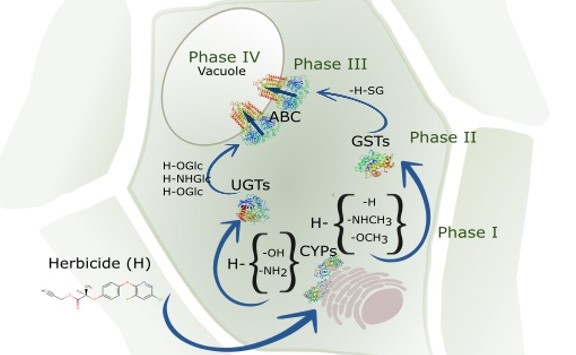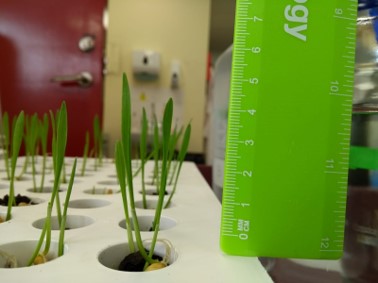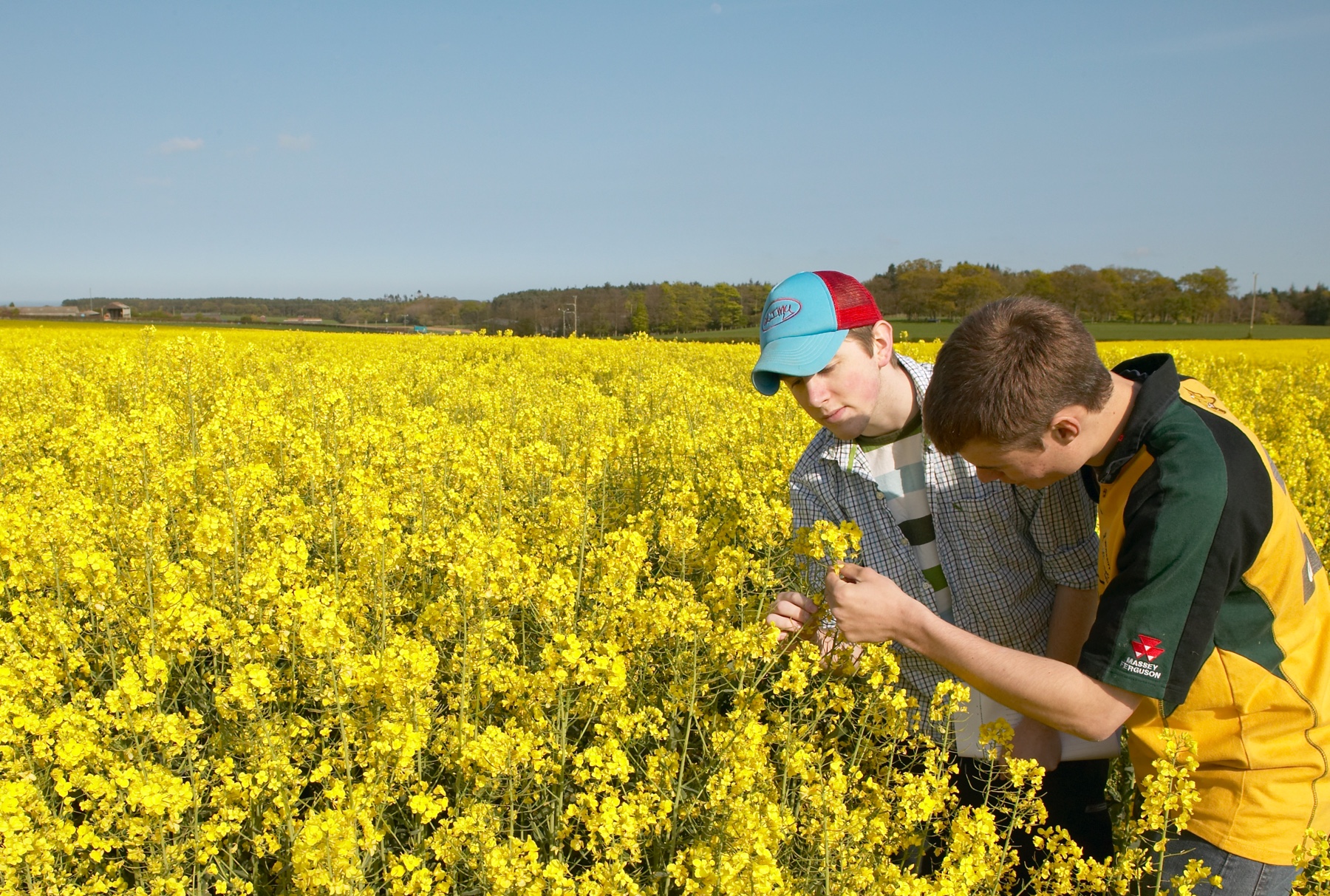Crop Health & Protection
Our Research
Crop health and protection covers our work on characterising pathogens and pests, understanding how they fit within agri-environment systems and ultimately research to develop and improve sustainable methods for control. Globally we face an increase in pressure from pathogens and pests, driven by global movement of plants and plant products, climate change and intensification of agricultural production. Collectively these factors expand the range of pests and pathogens, moving them to new crops in new locations, and create environments that drive damaging epidemics. Traditionally we have been over-reliant on synthetic agrochemicals for the control of pests, pathogens and weeds. However, the pipeline of new control products is reducing, with increased awareness of their broader environmental harms driving tighter regulation. Development of resistance is also a challenge, rendering many once efficacious products ineffective. As a result, better understanding of the agri-environmental landscape as it relates to pests and pathogens is needed to help push forward integrated pest management (IPM) approaches to sustainable control.
Inextvir: Innovative Network for Next Generation Training and Sequencing of Virome
Topic: Inextvir (https://inextvir.eu/) is a Marie Curie – Innovative Training Network, exploring the use of high-throughput sequencing in virus ecology, virus discovery, diagnostics and plant health.
- Funder: EU
- Project collaborators: Ferran Salavert Pamblanco, Johny Hilaire, Neil Boonham, Lynn Frewer and Sophie Tindale
- External partners: Adrian Fox and Glyn Jones (Fera Science Ltd); Maja Ravnikar, Ion Guttirez, Denis Kutnjak Mark Paul Rivarez, Olivera Maksimovic (NIB); Fernando García-Arenal, Adrian Zamfir, Bisola Babalola (University of Madrid); Thierry Candresse, Armelle Marais Colombel, Maryam Khalili, Deborah Schoenegger (INRA); Sebastien Massart, Nuria Fontdevilla, Coline Temple (University of Liege); Yolanda Saiz, Ayoub Maachi (Abiopep); Maxime Devos, Johan Rollin (DNA Vision); (Biosistemika); Macha Nikolski, Grigorii Sukhorukov (Bordeaux Bioinformatics Center); Francoise Petter (EPPO)
Summary:
Plant viruses cause 50% of the emerging plant diseases globally and pose an important threat to many agricultural crops. Losses are estimated at €15 to 45 billion per year through lower yields and reduced product quality. That is why Inextvir seeks to generate a better understanding of viral communities and their role in agricultural ecosystems by using the latest advances in high throughput sequencing (HTS) technologies coupled with modern big data analytical approaches and socioeconomic analysis. The project provides a timely opportunity to change our approach to plant health and improve our ability to overcome global agricultural, food security and environmental challenges.
The project brings together 15 early career researchers working on various aspects of virology. From development and refinement of virus identification pipelines, through the use of HTS for investigating virus ecological networks, broad scale diagnostics in agricultural/horticultural settings and investigating the policy impacts of using these techniques in plant health.
Links to modules: ACE1022, ACE3034, BIO1021, BIO3052, ACE811L
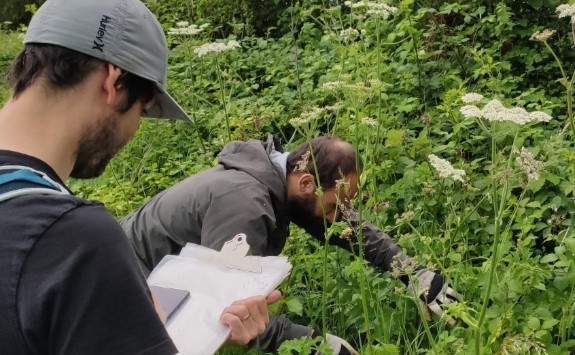
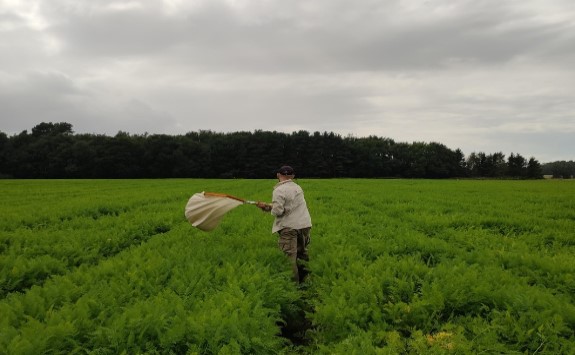
Exploring potato's virome leading to a improved diagnostics and a novel control strategy
Topic: Potato viruses continue to be a significant limitation to potato production, causing down grading of seed crops and reducing yield in ware crops. This project will use HTS to perform a contemporary survey of potato crops in Egypt, develop novel diagnostics for the most prominent viruses and explore the use of spray induced gene silencing for controlling these damaging pathogens.
- Funder: Egyptian Government
- Project collaborators: Omnia Elshorbagy, Neil Boonham, Kirsty McInnes, Julian Bello-Rodriguez
- External partners: Adrian Fox (Fera Science Ltd)
Summary:
Potatoes (Solanum tuberosum) are one of the most important food crops grown globally. In Egypt, it is one of the most important staple crops for consumption, significant for processing and exports. Approximately 212,000 acres are cultivated to produce around 2.2 million tons of potatoes, which can reach 10.5 tons per acre. Potatoes are impacted by a wide range of virus infection including more than 35 viruses, that reduce yield and quality of potato tubers. Viruses transmitted by insects, in particular aphids are the most economically important problem for potato production worldwide as they reduce the yield and quality of tubers and are as a result the major reason for seed potato rejection from certification programs.
To improve potato productivity and quality, various aspects must be developed including forecasting of pests and diseases, as well as developing protection strategies. We plan to use the nanopore sequencing technology to reveal the presence and variation of potato viruses in Egypt. We will use this information to develop rapid detection techniques including LAMP to incorporate into certification schemes, finally we will explore biological specific treatment such as an RNA biopesticide to avoid viruses spreading within potato crops.
Links to modules: ACE1022, ACE3034
Viruses of imported Andean root and tuber crops and their plant health risk to the UK
Topic: Several Andean tuber crops have been grown in the UK, primarily by hobbyists. The tubers are readily traded through internet sites. In preliminary studies some previously known and some novel viruses have been found in these crops, though the wider risk these pathogens pose to UK agriculture is not yet understood.
- Funder: Defra and RHS
- Project collaborators: Morgan Wodring, Neil Boonham, Kirsty McInnes
- External partners: Adrian Fox (Fera Science Ltd); Lisa Ward (RHS)
Summary:
Following the discovery of several novel or unusual viruses in the Andean tuber crop Ullucus tuberosus being grown and traded in the UK and Europe, further work was conducted to investigate a range of other niche crops including Yacon and Oca. These species are largely grown by the hobby grower as an exotic foodstuff and for interest, however there is an increasing interest in them as commercial crops. Similarly, further novel viruses were detected in these hosts. Of these, the greatest concern were two novel tymoviruses with a close genetic similarity to high-risk quarantine pathogens such as Andean potato latent virus and Andean potato mottle mosaic virus. Additionally, yacon purchased through internet trade was found to host a strain of Potato yellowing virus, potentially another high-risk quarantine pest if this strain is shown to infect potato.
Before assuming that any newly discovered viral agent is a potentially damaging pathogen work should be carried out to assess the biosecurity risk that virus poses to agriculture/horticulture. The aims of this project will be to investigate the risk that novel viruses found to be infecting these tuberous species present to UK agriculture and horticulture. We will also investigate innovative approaches to risk assessment of novel viral pathogens using Andean tuber viruses as model pathogens for the study and explore the possibility of producing virus free planting material for these crops.
Links to modules: ACE8117
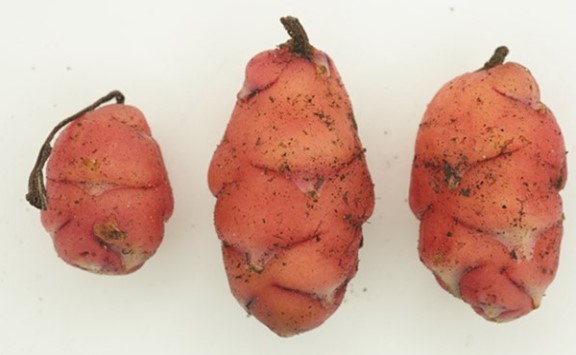
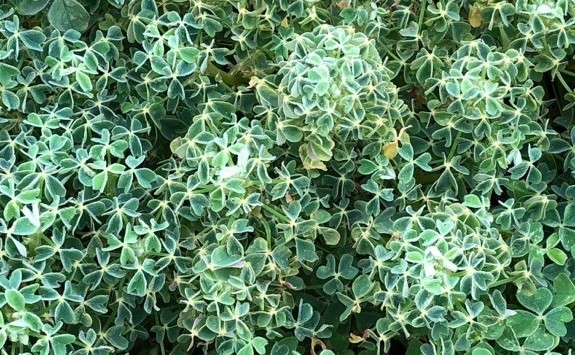
Benign infections or damaging epidemics: the influence of biology, the environment and agricultural practice on vector-borne phytobacteria
Topic: Factors that contribute to some pests and diseases being serious problems in one location and not another are largely unknown. Identifying these factors is fundamental to better understand risks associated with introductions of pests and diseases into new environments via globalised trade of plants and plant products.
- Funder: BBSRC
- Project collaborators: Neil Boonham, James Kitson, Darren Evans
- External partners: Adrian Fox (Fera Science Ltd); Fiona Highet and David Kenyon (SASA); Saskia Hogenhout (John Innes Center); Ramiro Morales-Hojas (Rothamsted Research); Adam Kleczkowski (Strathclyde University)
Summary:
The bacterium ‘Candidatus Liberibacter solanacearum’ (Lso) is an emerging threat to a range of crops including potato, tomato, carrot and celery and is under statutory control in the EU. In potato Lso induces zebra chip, a damaging disease manifest by brown stripes in the tubers, which cause large losses in fresh and processing markets. The disease has spread quickly through the Americas and more recently into New Zealand. A genetically different sub-group (haplotype) of the bacteria causes a damaging disease of carrots in Scandinavia, Northern France and the Mediterranean basin. Whereas this haplotype can infect potato, disease in this crop is not evident in Europe. The disease is transmitted by psyllids, which are sap-feeding insects. The psyllid Bactericera cockerelli spreads Lso in the Americas and New Zealand, whilst two native species (Trioza apicalis and Bactericera trigonica) and possibly a third species (B. nigricornis) spreads the bacteria in Europe.
In the UK the pathogen has been detected in carrots, weeds and in psyllids caught in insect traps. Despite the presence of the pathogen and competent vector species, the bacteria is not currently causing widespread crop damage in either potato or carrots. The focus of this project is to better understand the factors that may contribute to Lso becoming a more important pathogen in the UK. Factors may include differences between Lso haplotypes, the geographical distributions and genetics variations of Lso haplotypes and psyllid vectors, landscape designs (such as weeds that surround crop fields), and agricultural practice/policy. The overall aim of the work is to investigate the complex network of Lso haplotypes, hosts and vectors in the UK landscape, focussing on carrots, related crops and apiaceous weeds.
Links to modules: ACE1022, ACE3034
Controlling pathogen populations using biopesticides in vertical farming systems
Topic: Vertical farming enables the production of high quality produce in high-density, vertically stacked, hydroponic units, grown without the use of synthetic pesticdes. The intensity of cultivation means they are prone to outbreaks of pathogens than thrive under these conditions, spreading unchecked. This project explores the efficacy and mechanism of action of biofungicides used in crops grown in hydroponics.
- Project collaborators: Dan Armstrong, Neil Boonham, Dave George, Elisa Lopez-Capel
Summary:
One of the benefits of growing within the highly controlled conditions of vertical farming is the very high intrinsic biosecurity to which the approach lends itself. As a result high quality crops can be grown without the use of synthetic pesticides which is not only a production cost saving, but supports a premium price with consumers. However, the systems are not completely bio-secure and pathogens can enter on compost, in irrigation water, on seeds and can be introduced by workers. In the relatively sterile environments pathogens can expand quickly, and total wipe out of crops is not uncommon, as pathogens spread unchecked through the systems.
Whilst early detection of pathogens is important (See Infarm 2.0 project) without any curative management practices, this primarily facilitates rapid disposal and replanting of affected farms. The use of biopesticides and biostimulants may offer the potential to prevent the build-up of pathogens following introduction into the farming systems. Promoting more robust plant growth, outcompeting pathogens or triggering host defence, these products could provide a more sustainable solution to crop losses. This project will explore a range of products, their impacts on common pathogens seen in hydroponics systems and provide a better understanding of the mechanisms of prevention/control.
Links to modules: ACE1022, ACE3034
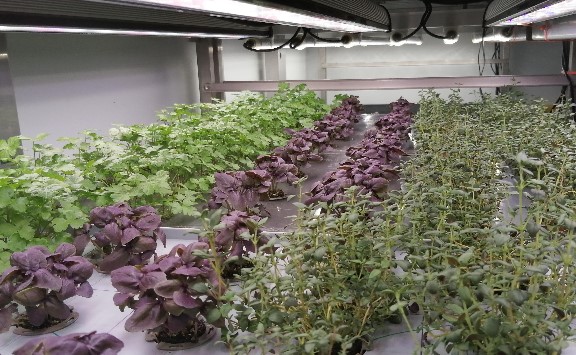
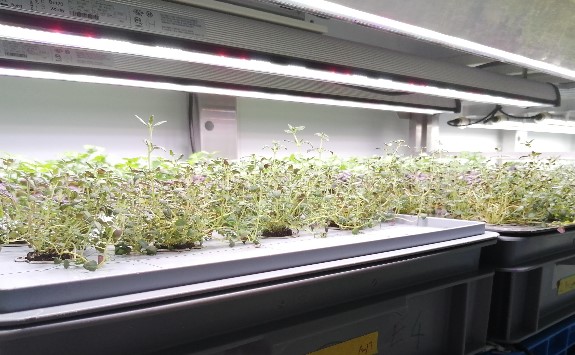
Critical roles for Cytochromes P450 (CYP450s) in sustainable wheat production
Topic: The project adopts the latest approaches in functional genomics to characterise a group of technically challenging enzymes (CYP450s). This study will transform the knowledge of CYPs in crops and weeds and provide important insight and tools for the development of new selective herbicides.
- Funder: BBSRC-IPA
- Project collaborators: Robert Edwards, Nawaporn Onkokesung, Alina Goldberg, Stewart Brown
- External partners: Syngenta
Summary:
Selective weed control is almost wholly dependent on the relative rates of herbicide metabolism, with detoxification in the cereal normally greatly exceeding that in the wild grass, thus protecting the crop from phytotoxic damage. Hence, changes in the status of crop and weed detoxification systems greatly affects herbicide selectivity.
Herbicide safeners are groups of chemicals known to enhance herbicide selectivity in cereals through their induction of xenome enzymes including CYP450s. Through our experience in xenome biochemistry, we are now developing the multidisciplinary tools to systematically study the basic biochemistry of CYP450s and their role in crop protection in crops and weeds.
